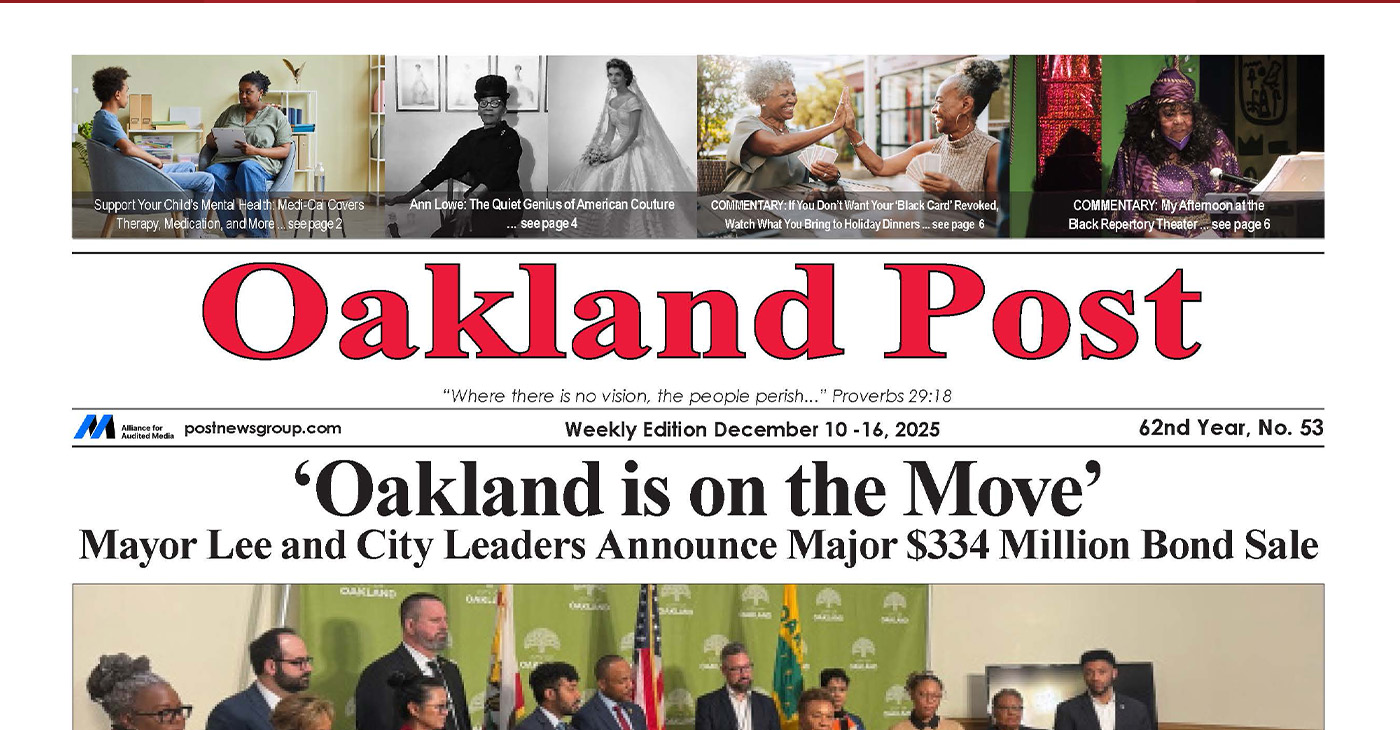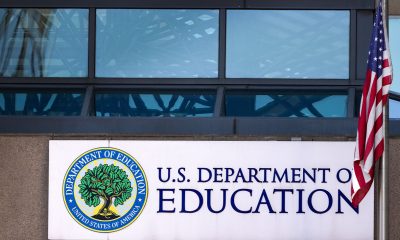National
Preventing Student ‘Summer Slide’
By Jazelle Hunt
NNPA Washington Correspondent
WASHINGTON (NNPA) – As students slip into their summer vacations, it’s up to families to make sure they don’t slip into academic amnesia. Usually, in what is called the summer slide, students forget up to six months of math and reading instruction when they’re not engaged in academic activities between school years.
Matthew Mugo Fields thinks he has the solution to halting that slide. He hopes to bridge the gap with Rocket Group, an education company he founded. His suite of programs for schools and parents blend technology, face-to-face instruction, and specialized curricula based on groundbreaking yet obscure research from Stanford University.
“[Summer slide] is a huge problem. And it’s exacerbated for low-income and minority students,” says Fields, a Morehouse University alumnus who holds a double-masters in business and education from Harvard University. “The research I’ve seen says that nearly half of the achievement gap can be explained by the difference in summer learning between low-income students and their counterparts.
Tammy Drayton is an early childhood teacher in Newark, N.J. Even kindergarten students are expected to know a few things at the start of school, such as counting to 10, colors, shapes, and the days of the week. When such lessons are new or lost to them, the impact is clear.
“We might have to do more one-on-one work with [that student],” she said. “But it may affect their social skills. Because if they realize they’re not on the level of other kids, they tend to pull away and shut down. They feel different, in a sense.”
Summer slide affects older students, too, and the stakes are much higher. In high school, there are fewer interventions and opportunities to relearn lost information, and students can become discouraged with their performance – internally and through the actions of teachers and administrators. In this way, summer slide can lead to dropping out.
It also manifests as poor preparation for post-graduation. Another term, “summer melt,” happens when college-eligible high school seniors do not successfully transition to post-secondary education. The Department of Education estimates that up to 20 percent of high school graduates are lost this way, most of them of color.
“Preparation is a factor, but not the guiding factor of whether a student will be college-bound,” says David Johns, executive director of the White House Initiative on Educational Excellence for African Americans. “The belief…if they can even go to college diminishes, if they are not supported over time.”
The White House Initiative on Educational Excellence for African Americans is currently working on combatting these summer losses. Although it is still gathering data, it’s clear that parental involvement is one of the most important factors in academic achievement across years, for students of all ages.
“It’s important to acknowledge that the first and most important educator in a child’s life is his or her parents. One of the challenges is engaging parents to supplement learning for their scholars,” says Johns.
“Often the way we think of learning is that it’s for school only, it happens in the classroom within the school day. But educational development…happens throughout the calendar year.”
Drayton says that in her kindergarten classroom, parents’ efforts are more important than the personalized schoolwork packets her school sends home with students.
“My students left me today, and I gave them a list of books along with a summer packet. I don’t necessarily rely on the packets [to determine if slide has occurred],” she says. “It affects [students] based on if they worked with a parent, and it all depends on if they had practice or continuing education in the summer.”
Johns explains that income is the strongest predictor of summer slide. More affluent families have the money, job flexibility, and connections to keep their children engaged with programs, gadgets, and enriching experiences throughout the year.
Other families, who may lack time, money, and access, have to get resourceful in supplementing their child’s education.
“Go to the library – it’s free. Dollar stores sell books, and places like the Salvation Army sometimes gives away books,” Drayton recommends. “Read something with your child every day. It’s essential to build literacy skills over the summer.”
For parents and guardians, Fields offers GiftedandTalented.com, which provides personalized academic supplements and one-on-one tutoring via video chat. The supplements are designed to give all students access to the high-quality resources found in traditional gifted and talented classes, regardless of the student’s placement in school. There are free activities on the site, but income-based scholarships and financial assistance is also available to take advantage of the site’s complete offerings.
“I aspire to get many more students to embrace the idea that ‘gifted and talented’ is a destination, it’s something you can become, not just something you’re born as,” Fields says, also recommending the library and recreation centers to prevent summer slide.
“We are in the golden age of technology and education – there are things people can access with any kind of device to keep students engaged. Use the summer to get ahead.”
Johns suggests singing, reading, and playing with younger students to keep their minds sharp, and planning in advance and setting achievable goals for more independent kids. The Department of Education also recommends helping high school students create post-graduation prep checklists, and allowing them to job shadow a parent or relative, or encouraging them to volunteer if they cannot find a job for themselves.
“Create a summer intervention plan. Ensure every day they can preserve their knowledge,” he says. “Sometimes we make this more complicated than it has to be. There’s a role every person can play to make these learning connections, whether grandma reads to them, or dad takes them to the museum, or someone counts money with them. Everyone can be an important part of learning for our scholars.”
Activism
Ann Lowe: The Quiet Genius of American Couture
Lowe was born in Clayton, Alabama, into a family of gifted seamstresses. Her mother and grandmother were well-known dressmakers who created exquisite gowns for women in the area. By the time Lowe was a young girl, she was already showing extraordinary talent — cutting, sewing, and decorating fabric with a skill that far exceeded her age. When her mother died unexpectedly, Lowe – only 16 years old then – took over her mother’s sewing business, completing all the orders herself.

By Tamara Shiloh
Ann Cole Lowe, born Dec.14, 1898, was a pioneering American fashion designer whose extraordinary talent shaped some of the most widely recognized and celebrated gowns in U.S. history.
Although she designed dresses for society’s wealthiest families and created masterpieces worn at historic events, Lowe spent much of her life in the shadows — uncredited, underpaid, yet unmatched in skill. Today, she is celebrated as one of the first nationally recognized African American fashion designers and a true visionary in American couture.
Lowe was born in Clayton, Alabama, into a family of gifted seamstresses. Her mother and grandmother were well-known dressmakers who created exquisite gowns for women in the area. By the time Lowe was a young girl, she was already showing extraordinary talent — cutting, sewing, and decorating fabric with a skill that far exceeded her age. When her mother died unexpectedly, Lowe – only 16 years old then – took over her mother’s sewing business, completing all the orders herself. This early responsibility would prepare her for a lifetime of professional excellence.
In 1917, Lowe moved to New York City to study at the S.T. Taylor Design School. Although she was segregated from White students and forced to work separately, she, of course, excelled, graduating earlier than expected. Her instructors quickly recognized that her abilities were far above the typical student, especially her skill in hand-sewing, applique, and intricate floral embellishment – techniques that would become her signature.
Throughout the 1920s and 1930s, she designed gowns for high-society women in Florida and New York, operating boutiques and working for prestigious department stores. Her reputation for craftsmanship, originality, and elegance grew increasingly. She was known for creating gowns that moved beautifully, featured delicate hand-made flowers, and looked sculpted rather than sewn. Many wealthy clients specifically requested “an Ann Lowe gown” for weddings, balls, and galas.
Her most famous creation came in 1953: the wedding gown worn by Jacqueline Bouvier when she married Massachusetts Sen. John F. Kennedy. The dress – crafted from ivory silk taffeta with dozens of tiny, pleated rosettes – became one of the most photographed bridal gowns in American history. Despite this achievement, Lowe received no public credit at the time. When a flood destroyed her completed gowns 10 days before the wedding, she and her seamstresses worked day and night to remake everything – at her own expense. Her dedication and perfectionism never wavered.
She eventually opened “Ann Lowe Originals,” her own salon on New York’s Madison Avenue. She served clients such as the Rockefellers, DuPonts, Vanderbilts, and actresses like Olivia de Havilland. Yet even with her wealthy clientele, she struggled financially, often undercharging because she wanted every dress to be perfect, even if it meant losing money.
Lowe’s contributions were finally recognized later in life. Today, her exquisite gowns are preserved in museums, including the Smithsonian National Museum of African American History and Culture and the Metropolitan Museum of Art.
In the last five years of her life, Lowe lived with her daughter Ruth in Queens, N.Y. She died at her daughter’s home on Feb. 25, 1981, at the age of 82, after an extended illness.
Activism
Oakland Post: Week of December 10 – 16, 2025
The printed Weekly Edition of the Oakland Post: Week of – December 10 – 16, 2025

To enlarge your view of this issue, use the slider, magnifying glass icon or full page icon in the lower right corner of the browser window.
Alameda County
Seth Curry Makes Impressive Debut with the Golden State Warriors
Seth looked comfortable in his new uniform, seamlessly fitting into the Warriors’ offensive and defensive system. He finished the night with an impressive 14 points, becoming one of the team’s top scorers for the game. Seth’s points came in a variety of ways – floaters, spot-up three-pointers, mid-range jumpers, and a handful of aggressive drives that kept the Oklahoma City Thunder defense on its heels.

By Y’Anad Burrell
Tuesday night was anything but ordinary for fans in San Francisco as Seth Curry made his highly anticipated debut as a new member of the Golden State Warriors. Seth didn’t disappoint, delivering a performance that not only showcased his scoring ability but also demonstrated his added value to the team.
At 35, the 12-year NBA veteran on Monday signed a contract to play with the Warriors for the rest of the season.
Seth looked comfortable in his new uniform, seamlessly fitting into the Warriors’ offensive and defensive system. He finished the night with an impressive 14 points, becoming one of the team’s top scorers for the game. Seth’s points came in a variety of ways – floaters, spot-up three-pointers, mid-range jumpers, and a handful of aggressive drives that kept the Oklahoma City Thunder defense on its heels.
One of the most memorable moments of the evening came before Seth even scored his first points. As he checked into the game, the Chase Center erupted into applause, with fans rising to their feet to give the newest Warrior a standing ovation.
The crowd’s reaction was a testament not only to Seth’s reputation as a sharpshooter but also to the excitement he brings to the Warriors. It was clear that fans quickly embraced Seth as one of their own, eager to see what he could bring to the team’s championship aspirations.
Warriors’ superstar Steph Curry – Seth’s brother – did not play due to an injury. One could only imagine what it would be like if the Curry brothers were on the court together. Magic in the making.
Seth’s debut proved to be a turning point for the Warriors. Not only did he contribute on the scoreboard, but he also brought a sense of confidence and composure to the floor.
While their loss last night, OKC 124 – GSW 112, Seth’s impact was a game-changer and there’s more yet to come. Beyond statistics, it was clear that Seth’s presence elevated the team’s performance, giving the Warriors a new force as they look to make a deep playoff run.
-

 Activism4 weeks ago
Activism4 weeks agoOakland Post: Week of November 12 – 18, 2025
-

 Activism4 weeks ago
Activism4 weeks agoIN MEMORIAM: William ‘Bill’ Patterson, 94
-

 Activism4 weeks ago
Activism4 weeks agoHow Charles R. Drew University Navigated More Than $20 Million in Fed Cuts – Still Prioritizing Students and Community Health
-

 Bay Area4 weeks ago
Bay Area4 weeks agoNo Justice in the Justice System
-

 #NNPA BlackPress3 weeks ago
#NNPA BlackPress3 weeks agoBeyoncé and Jay-Z make rare public appearance with Lewis Hamilton at Las Vegas Grand Prix
-

 #NNPA BlackPress3 weeks ago
#NNPA BlackPress3 weeks agoLewis Hamilton set to start LAST in Saturday Night’s Las Vegas Grand Prix
-

 Activism3 weeks ago
Activism3 weeks agoOakland Post: Week of November 19 – 25, 2025
-

 #NNPA BlackPress2 weeks ago
#NNPA BlackPress2 weeks agoLIHEAP Funds Released After Weeks of Delay as States and the District Rush to Protect Households from the Cold




















































